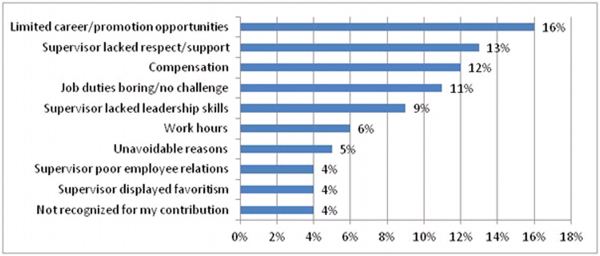Many employers wrongfully assume the reason employees leave is because of compensation. However, a recent study by PwC shows that while compensation is one of the reasons employees leave, it is certainly not the first and only reason.
According to the study, employees are more likely to leave an organization due to limited career opportunities, as well as low support and respect levels from supervisors. Compensation is the third most common reason employees leave organizations.
This data is alarming because it shows that most employers incorrectly assume the cause for turnover. In doing so, there is nothing being done to prevent more employees from leaving in the future.

By conducting exit interviews and surveys you can uncover hidden issues within your organization. If there is a high turnover under a certain supervisor, don’t assume it is a coincidence or that employees were able to find better pay elsewhere. Find out what is going on within that department and identify the problem. This will help prevent future turnover and will make your current employees happier.
Exit surveys can oftentimes be more beneficial than the annual or quarterly surveys you might already be conducting with your employees. Exiting employees are more likely to be candid and honest since they are already on their way out the door. This is especially true when a survey is done by a neutral 3rd party.
The information you gather can prove to be very valuable to the growth and development of your business. It can help companies prioritize actionable items to improve processes, morale, job satisfaction, engagement, retention, and more.
However, not all exit interviews will be negative. You can also use the answers to identify the strengths of your organization.
Are you looking for some ideas on how to improve employee retention? Check out our blog that touches on five things you can do to promote happiness, engagement and motivation at your company.






